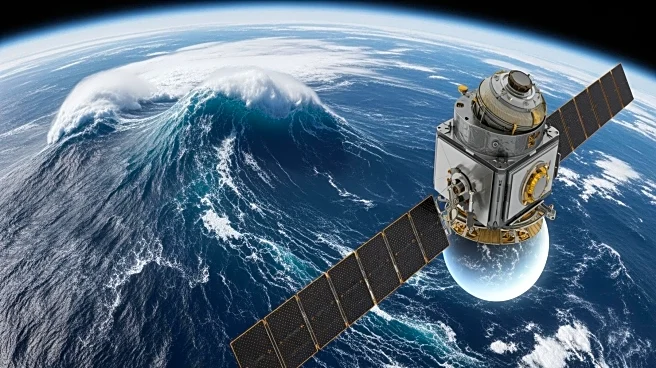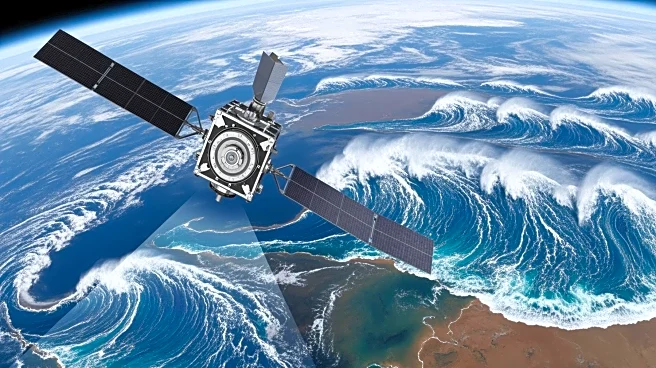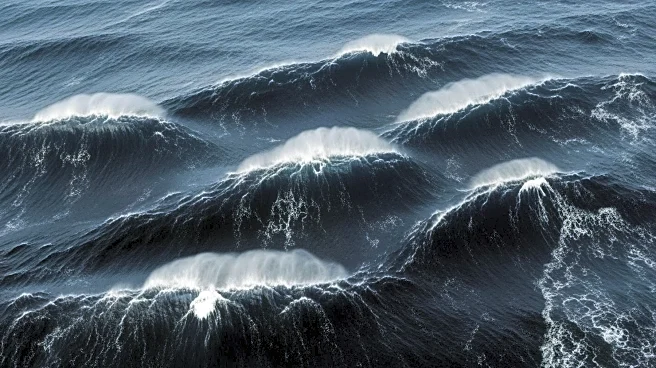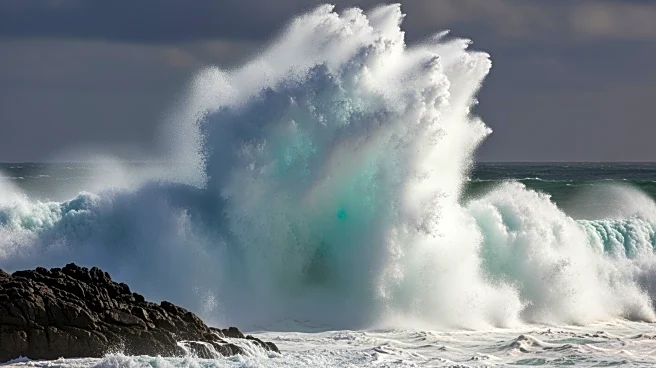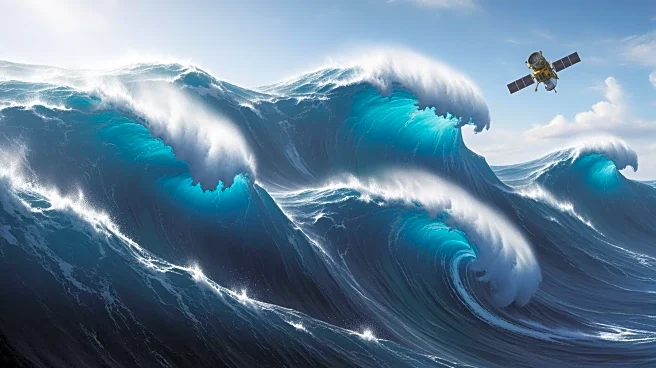What's Happening?
Satellites have captured the largest ocean swells ever recorded, demonstrating the immense power of storms to transport energy across oceans. A North Pacific storm, known as Storm Eddie, generated waves
reaching nearly 20 meters in height, equivalent to almost 65 feet. These waves traveled thousands of miles, impacting distant coastlines despite the storm itself remaining at sea. The European Space Agency (ESA) utilized SWOT's wide-swath radar imaging to gain a comprehensive view of these storm waves, which traveled approximately 24,000 km from the Pacific to the tropical Atlantic. The observations reveal that shorter, steeper waves carry significant storm energy, challenging previous assumptions that longer swells were primarily responsible.
Why It's Important?
The ability of ocean swells to transport storm energy over vast distances has significant implications for coastal communities worldwide. These waves can cause erosion and flooding on remote coastlines, posing risks to infrastructure and ecosystems. Understanding the dynamics of these waves allows scientists to better predict and warn affected areas, potentially mitigating damage. The findings challenge existing theories about storm energy distribution, emphasizing the need for updated models to improve forecasting accuracy. This research highlights the interconnectedness of global weather systems and the importance of satellite technology in monitoring and understanding these phenomena.
What's Next?
Further research is likely to focus on refining models of wave energy distribution and improving prediction capabilities for coastal impacts. Scientists may continue to leverage satellite data to study storm patterns and their effects on distant shores. Coastal communities could benefit from enhanced warning systems and preparedness strategies informed by these findings. Additionally, international collaboration may be necessary to address the broader implications of storm energy transport across oceans, including potential impacts on shipping routes and marine ecosystems.
Beyond the Headlines
The study of ocean swells and their ability to carry storm energy raises questions about the resilience of coastal infrastructure and the need for adaptive measures in response to climate change. As storms potentially increase in frequency and intensity, understanding their far-reaching impacts becomes crucial for global preparedness. The research also underscores the role of advanced satellite technology in providing critical insights into natural phenomena, paving the way for more informed decision-making in environmental policy and disaster management.
